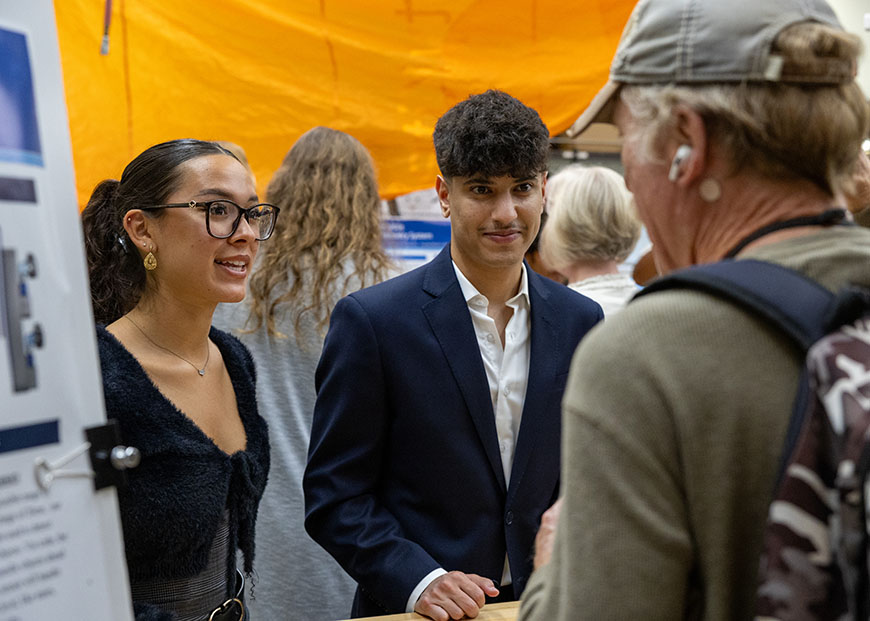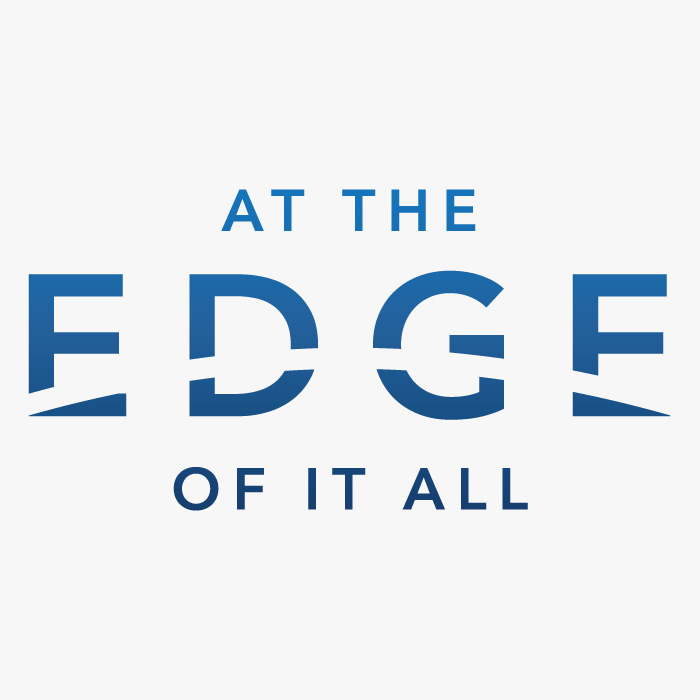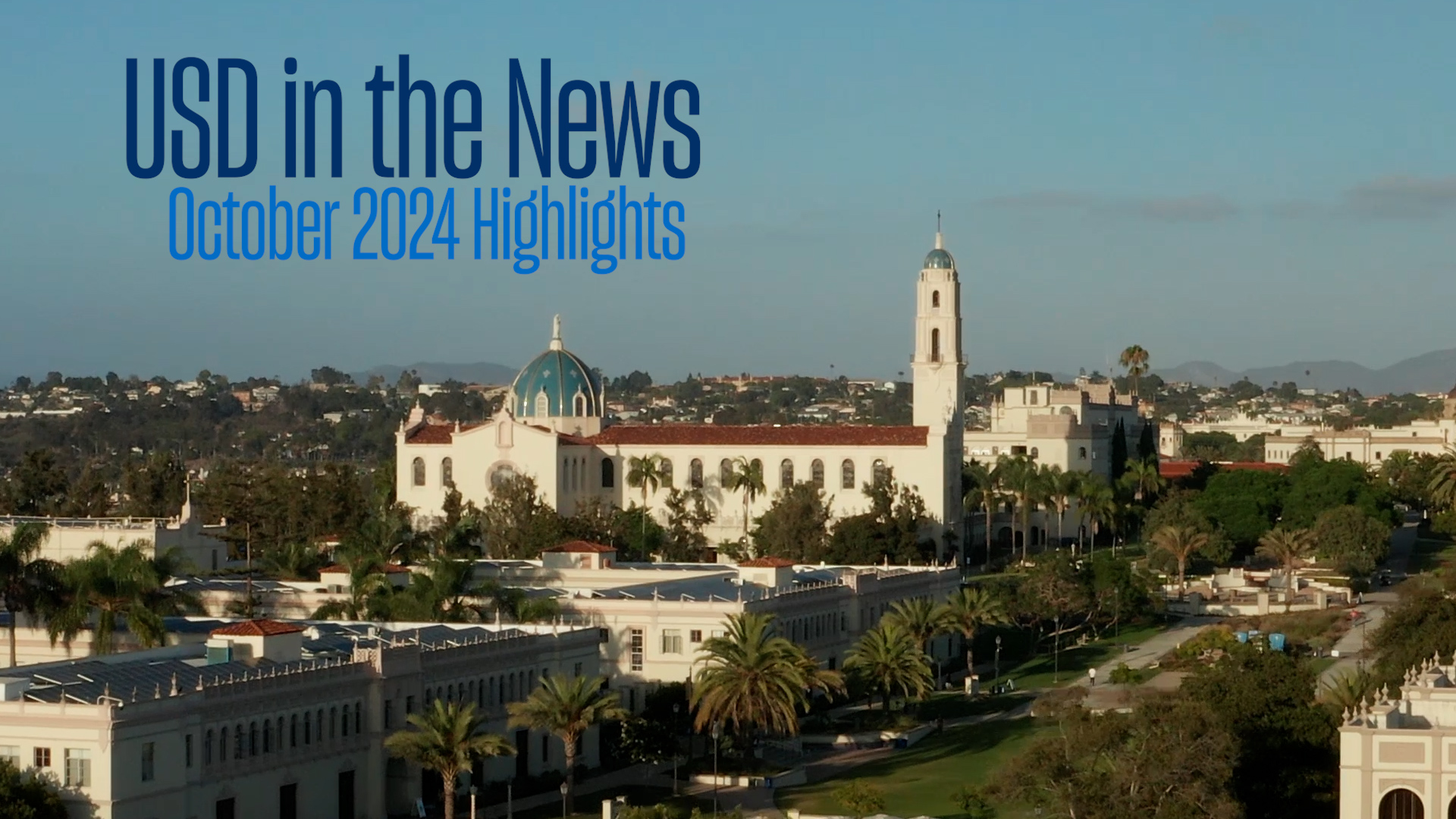Innovation and Inspiration on Display at Annual Engineering and Computing Showcase

The labs, classrooms and hallways inside the Belanich Engineering Center were alive with the sights and sounds of innovation during USD’s Shiley-Marcos School of Engineering annual Engineering and Computing Showcase on May 10.
Graduating seniors in computer science and electrical, industrial and systems, integrated and mechanical engineering presented and demonstrated their capstone design projects. Through the capstone design experience, students work within interdisciplinary teams on an open-ended project to understand and execute the full cycle of the design process.
“The showcase highlights the projects designed, fabricated and tested by senior engineering and computer science student teams during their year-long capstone class sequence,” said Associate Professor of Mechanical Engineering Daniel Codd, PhD, a senior design faculty member. “These are inspired by real-world challenges and serve as a great hands-on challenge for integration and application of their foundational engineering coursework.”
Capstone design projects range across six categories — industry sponsored, entrepreneurship, competition, community, software and research — and allow engineering and computer science seniors to apply knowledge learned throughout their undergraduate career in a real-world scenario.
“Through this experience, I learned the indirect impact that engineers have on a company and their patients,” said USD student Mia-Noelani Tabladillo, who worked on the Glaukos Cleaning Automation team.
Glaukos, a medical device company, specializes in glaucoma treatments which are composed of many different mechanical parts. In these devices, they contain hypodermic tubes and needles of various sizes, all being sewing needle-sized or smaller, Tabladillo explained.
“Our team was tasked to completely automate Glaukos' hypodermic tube cleaning process during their manufacturing process,” she said. “To do this, we used an Epson 6-axis robot arm as well as various other components that we designed and developed to work in conjunction with this robot. In automating their cleaning process they are able to expedite their manufacturing process and create more of these medical devices that will make these treatments more accessible to all glaucoma patients.”
USD student Shaelyn Tavares worked on the Kapawi Electric Boat System team. The work centered around the Kapawi Ecolodge, an eco-tourism destination in the Ecuadorian part of the Amazon Rainforest run by the Achuar indigenous community.
“Currently, the only way of transportation is by fuel-powered boats, which has caused a great deal of pollution and hearing problems for the members of the community,” explained Taveres. “In hopes of being more sustainable and incorporating more renewable energy sources, the ecolodge wanted a new boat hull design to accommodate an electric motor. Alongside this, our team also designed a solar-powered charging station for the motor's batteries."
Through the experience, Tavares learned about the importance of understanding and designing with the end-user in mind.
“Seeing as our project is community-based, it was important for us to build a relationship with the individuals involved on the Ecuadorian side of the project,” she said. “Before beginning, we wanted to prioritize understanding the community and their needs. This ultimately allowed us to gain feedback to ensure we are designing for their needs instead of against them.”
— Story and photos by Matthew Piechalak




